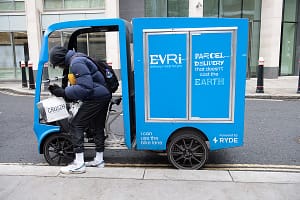Tesco and Sainsbury’s are using potentially dodgy tactics on some of their loyalty offers which can give the impression that savings are more substantial than they really are.
Aa new Which? investigation suggests, as the consumer champion finds some customers are being denied access to member discounts altogether.
Which? has shared its findings with the Competition and Markets Authority (CMA) and asked them to look at whether supermarkets could be hiking their ‘regular’ prices to make loyalty scheme customers feel they are getting a discount.
As part of the investigation into retailers’ growing use of promotions attached to loyalty card schemes, the consumer champion analysed 141 Clubcard and Nectar card prices at Tesco and Sainsbury’s and tracked their pricing history back six months. It found that around a third (29%) of the member-only promotions were at their so-called ‘regular’ price, less than 50 per cent of the six month period.
Among the potentially dodgy deals uncovered by Which?’s investigation, Sainsbury’s advertised a jar of Nescafé Gold Blend Instant Coffee (200g) for £6 with a Nectar card – a saving of £2.10 on the ‘regular’ price of £8.10. But the regular price had also been £6 at Sainsbury’s until it went up to £8.10 just two days before the Nectar price launched. Which? also found the ‘regular’ Sainsbury’s price was much higher than at other supermarkets. At Asda, the same jar was £7, while at Morrisons, Ocado and Waitrose it was £6, £5.99 at Tesco and £5.49 at Lidl.
Similarly, at Tesco Which? found Heinz Salad Cream (605g) with a Clubcard price of £3.50 and a ‘regular’ price of £3.90 however its regular price had been £2.99 for several weeks before it was increased to £3.90 – just 22 days before the Clubcard promotion. It had been at its ‘regular’ price for only 25 days out of 183 (14% of the previous six months).
Which?’s research identified three key problems which centred around the ‘regular’ price quoted for products on offer to customers with loyalty cards. This included regular prices that had been changed right before the loyalty card promotion, regular prices that were far more expensive than at other supermarkets and regular prices that were only available for a very short amount of time.
Which? also spoke to shoppers about their thoughts on loyalty pricing. While many were content with the deals on offer, others told the consumer champion they thought they were being ripped off. One shopper told Which?: “I agree that these attract customers like me, but feel like they raise the prices anyway and then members’ prices become the normal price it should be.”
As well as being clear and not making unfair price comparisons, current regulator guidance dictates that it is important that if a proposed pricing practice explicitly or by implication indicates a saving against another price, the quoted saving is genuine and can be trusted by shoppers.
Overall, Which? found a third of the products at Sainsburys (34% of 71 products) were the ‘regular’ price less than half the time over the previous six months. At Tesco, it was a quarter of the products Which? looked at (24% of 70 products).
Another significant problem that Which? found in its investigation, is that not all customers are able to sign up to loyalty schemes in the first place. There are often age and address-based restrictions as well as digital requirements which mean those who are too young, do not meet the address requirements or do not have access to the technology needed, are not able to access discounts that would previously have been available to everyone.
This means that vulnerable groups, such as young parents and carers, school children buying lunch and those in temporary accommodation could be excluded from benefiting from the lower prices offered to members and may be paying inflated normal prices given the wider pricing practices that Which? uncovered. One person told Which?: “I don’t mind member-only pricing from a selfish point of view, but think it’s very discriminatory and morally questionable.”
Which?’s findings suggest that Tesco and Sainsbury’s are sometimes offering customers deals that do not necessarily constitute a genuine saving.
Which? has shared its findings with the regulator so that as promotional schemes rapidly proliferate between retailers, any pricing tactics which make loyalty discounts look more attractive are properly scrutinised.
Sue Davies, Which? Head of Food Policy, said, “It’s not surprising that shoppers are questioning whether supermarket loyalty card prices are really a good deal, as our investigation shows that up to a third of loyalty offers at Tesco and Sainsbury’s are not all they’re cracked up to be.
“As member-only pricing continues to grow, the sector, its pricing practices and who is eligible for membership needs to be properly scrutinised so that all shoppers – including society’s most vulnerable – can benefit and no one is misled into buying things they wouldn’t have usually bought or which isn’t quite the deal they believe it to be.
“Which? is calling on supermarkets to make sure that their loyalty card prices don’t mislead and for the regulator to look more closely at this growing trend towards dual pricing.
“There is also the important issue of whether it is right for certain groups to be excluded from member-only schemes.”






Leave a Comment